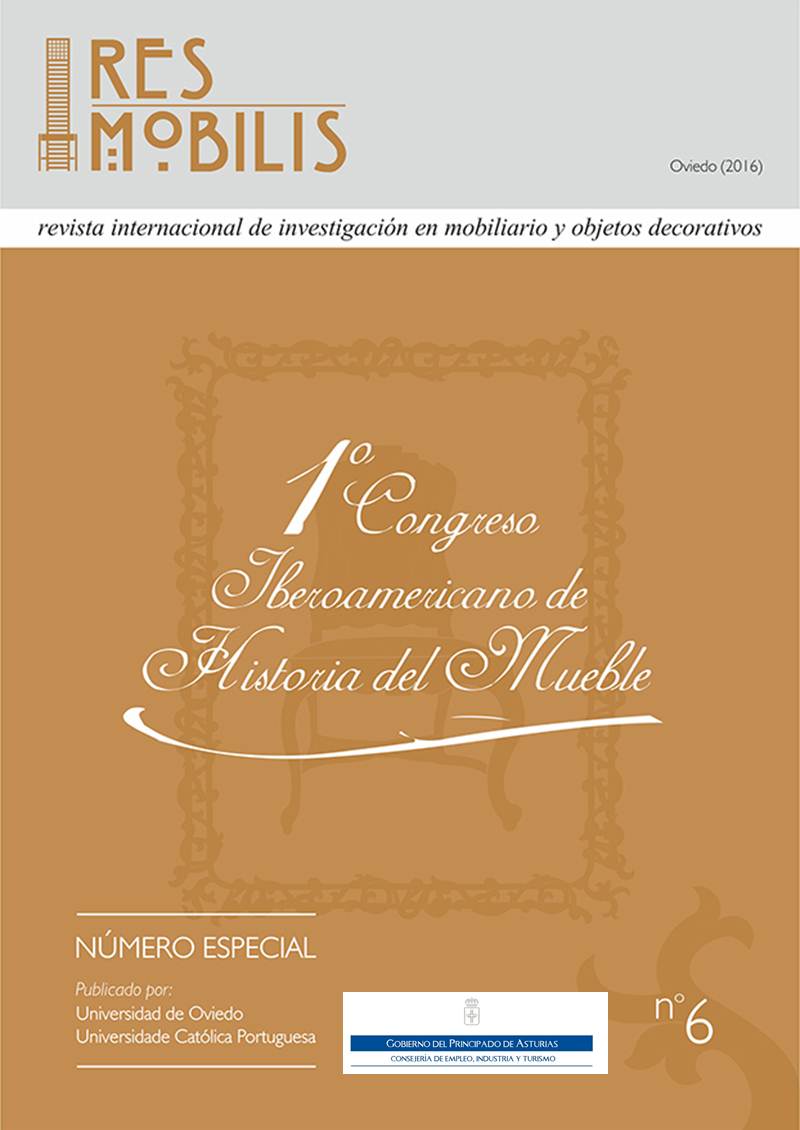Abstract
The office furniture Vilumara is investigated, constructed in 1915 in the “Ensanche” of Barcelona. The office furniture was the commercial and managing headquarters of the factory of sedates Vilumara of Hospitalet del Llobregat (Barcelona). Alexandre Soler Marye was the interior decorator and important craftsmen of the epoch realized the furniture, flooring, glass, placard, lamps, etc, of great artistic quality. There remains the furniture, the decoration and the documentation of the budgets and invoices, property of the descendant. We realize a monographic and unpublished paper of one of few examples that remain of this typology of establishment in Barcelona.
References
BARTRINA, Francesca, ESPASA, Eva, “Dones de teatre catalanes del XX: desafiaments de gènere als escenaris de la primera meitat de segle”, en LLADÓ, Jordi, VILARÓ, Jordi (eds.), Dona i Teatre al segle XXI. IV Jornades de debat sobre el repertori teatral català, Barcelona, Punctum & Grup de recerca en Arts Escèniques (Universitat Autònoma de Barcelona), 2013.
BOHIGAS, P., Exposició Internacional del Moble i Decoració d’Interiors de 1923, Barcelona, Llibreria Catalonia, 1930.
ELIAS, Feliu, La vida i l’obra de Soler i Rovirosa, Barcelona, Seix i Barral germans, 1931.
GUILLEUMES, Albert, LÓPEZ, Fátima, “El canvi d’ubicació del despatx Vilumara de principis del segle XX: un estudi del desmuntat, reconstrucció, conservació i documentació del patrimoni”, en VIII Jornades d’Arqueologia Industrial de Catalunya: Barcelona i les grans fàbriques dels segles XIX-XX, Barcelona, Museo de Historia de Barcelona, 2009.
LÓPEZ, Fátima, LÓPEZ, M. Àngels, “L’escultor Josep Cardona i Furró (1878-1922): un retratista prolífic (I)”, en Butlletí del Reial Cercle Artístic, nº 23, 2007.
LÓPEZ, Fátima, LÓPEZ, M. Àngels, “L’escultor Josep Cardona i Furró (1878-1922): un retratista prolífic (II)”, en Butlletí del Reial Cercle Artístic, nº 24, 2007.
LÓPEZ, Fátima, LÓPEZ, M. Àngels, “La relació de Josep Cardona i Furró (1878-1922) amb el Reial Cercle Artístic”, en Butlletí del Reial Cercle Artístic, nº 25, 2007.
MONTMANY, Antònia, COSO, Teresa, LÓPEZ, Cristina (dirección Francesc Fontbona), Repertori de catàlegs d’exposicions col•lectives d’art a Catalunya (fins a l’any 1938), Barcelona, Institut d’Estudis Catalans, núm. 99, 2002.
MUÑOZ, Joaquín, Escenografia española, Madrid, Real Academia de Bellas Artes de San Fernando, 1923.
RÁFOLS, Josep Francesc, Diccionario biográfico de artistas de Cataluña. Desde la época romana hasta nuestros días. Tomo III, Barcelona, Editorial Millá, 1954.
RIBAS, Josep, “Catalogació”, en Sagnier arquitecte: Barcelona 1858-1931, Barcelona, Antonio Sagnier, 2007, pp. 12-572.
RIBERA, Jordi, L'Escenògraf Maurici Vilomara, Tesis doctoral, Barcelona, Universidad de Barcelona, 1999.
VILUMARA, Josep Maria, LÓPEZ, Fátima (coord.), El Quarter de Sant Pere. Història d’un barri amagat de Ciutat Vella, Barcelona, Ajuntament de Barcelona-Viena Edicions, 2014.

